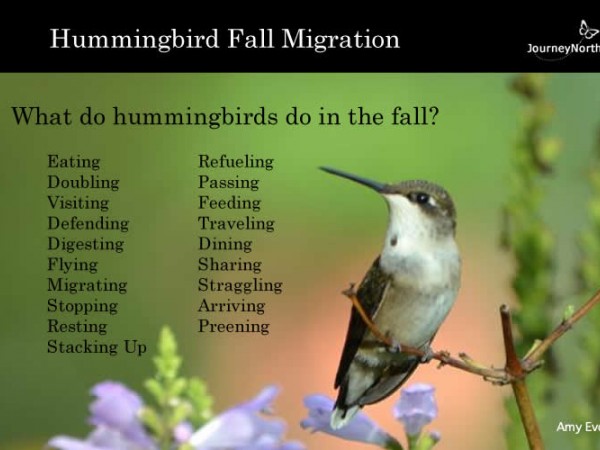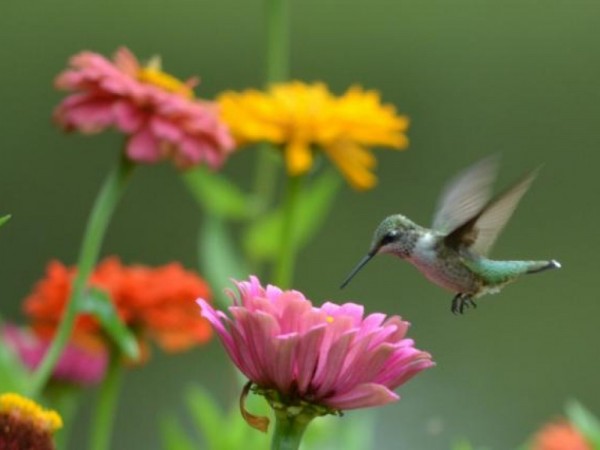Observing Fall Behavior
Teaching Suggestions
As summer ends and autumn nears, hummingbirds respond to seasonal changes: shorter daylight, cooler temperatures, and fall blooms. They instinctively know when to leave their breeding grounds. Fewer hours of daylight trigger hormonal changes that cause the urge to fuel up and fly south even though nectar-rich flowers are still in bloom and sugar-water feeders are full. What behaviors will you see this fall?
Driving Question: In the fall, where are hummingbirds and what are they doing?
For use with Photo Gallery: Observing Fall Behavior
Explore how these tiny birds respond to the seasonal changes in the fall by choosing from an array of activities:
Wonder…
Preview the images in the "Observing Fall Behavior" photo gallery. Wonder aloud about details in the photos and what clues they may reveal about where hummingbirds are and what they are doing. Create a way to sort and showcase the questions that are shared as you explore the images with your students:
- Wonder Rings: metal ring with paper tags
- Anchor Charts: classroom display of questions
- Graffitti Posters: each photo adhered to the center of large chart paper; students jot questions around the photos with markers
Collect…
Challenge students to hunt for resources on Journey North that will help them discover where hummingbirds are and what they are doing in the fall. Working in task groups students can collect specific types of resources or a scavenger-hunt of items:
- Images
- Migration Maps
- News Updates: current and archived
- Photo Galleries
- Articles
- Slideshows
Create…
Brainstorm a list of Make-It Idea by asking: What could we create with the images, information, and resources we collected that will help us observe hummingbirds, report our sightings, track their migration, and more?
- Field Notebooks: for sketching observations
- Field Guides: for identifying hummingbirds
- Hummingbird ID Cards
- Observation Checklists: what to look for; what to report
- Hallway Timelines: to visually document events during the season
- Discovery Books, eBooklets, Slideshows: showcase learning
- Anchor Charts of Sample Sighting Reports: helpful details to include when you report your sightings: time, place, weather conditions, duration of observation, descriptive words
Share…
Plan for ways students can share their observations, learning processes, and discoveries with a variety of audiences: classes, families, schools, and communities.
- Report your hummingbird sightings to the migration maps.
- Share your classroom photos of students in action: wondering, collecting, and creating on Twitter at #JNshare.


